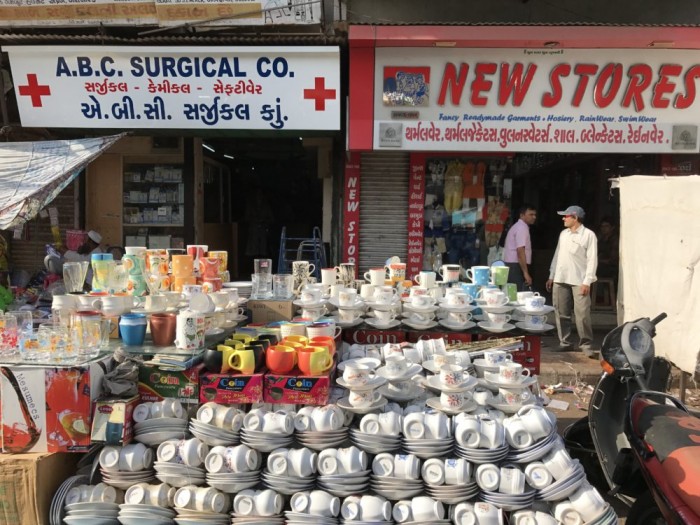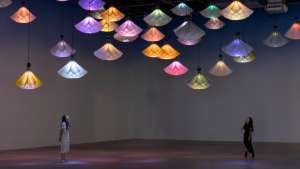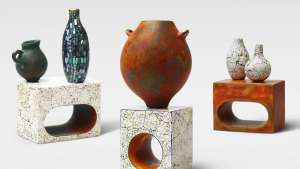This article is republished from Common Edge
As a designer and a student of cities, I am constantly amazed and baffled by Indian urbanism. It is an intense combination of hyper-density, chaos, and human ingenuity.
Every available inch is utilized. Three-lane roads cram six lanes of activity into them. Throngs of pedestrians mingle with cars, motor bikes, wagons, buses, and animals, all claiming the same limited space. Walking the neighborhoods can feel both overwhelming and magical.
A friend once took me for a stroll through a market district in Mumbai, where a network of alleys lead to a series of courtyards containing housing blocks, vendors, temples, even a dairy farm that provided cow’s milk for the surrounding community. (Talk about mixed-use.)
Recently I visited Ahmedabad and, reminded again of the incredible energy and vitality of Indian cities, came to a reluctant conclusion: In our work, we try to create places that are mixed and integrated, connected and open, but to create spaces like the heart of the old city of Ahmedabad, that might be an impossible task.
The old city center of Ahmedabad is a thriving hub of urban life. Pedestrians, motor cyclists, rickshaw drivers and sacred animals all vie for limited space on the street. Riding in the vehicle you feel close to the action, the sounds, the scents, the bumps in the road, all make you feel directly connected with the place.
The street widens and narrows. depending on the pattern of growth and ownership, to make various places for movement, bike parking and display.
The harsh sunlight is modified by fabric stretched across the space providing dramatic light in the late afternoon. You’re constantly aware of the space of the street. Moving from light to shade, openness to enclosure, has a dramatic affect on the intensity of the experience.
Inventive fabric shade screens can be adjusted depending on the time of day. Being able to modify shade conditions is critical to cope with the heat.
The magical quality of these places, with their hovering fabrics, is triggered by very practical needs. I am always thrilled to note the ingenuity of structure with limited means.
The remarkable variety of items for sale attract a diverse array of people to the market. Often the old city is the best place to buy certain household goods and produce.
From medical services to tea cups to alley apartments and mini towers, the diversity of businesses and living arrangements is typical of Indian cities. Proximity and constantly changing functions is at the heart of the dynamic urban environment.
Sacred animals move freely through the crowded streets angling for the same space as merchants, motorbikes and pedestrians.
This is probably the most striking aspect of engaging with the culture of an Indian city. The life of the countryside is juxtaposed with the intense urban space of the street.
Life in the city easily accommodates family livestock, such as this friendly goat being cared for by a local storekeeper and her friend. I assume that the goat provides milk for a family.
Across the road is a temple embedded in the block structure of the district. A portico signals an entry from the narrow street into a series of chambers.
The tiled floor is like a welcome carpet greeting the visitor. Moving from the bustling street of commerce, motor bikes and crowds of people, the serene, quiet and sacred space of the temple is a welcome respite.
Along a street in the city is a modest stair that leads to a small opening giving access to the Friday Mosque. The large open courtyard is a dramatic contrast to the tight spaces of the city streets.
The sparse nature of the space immediately establishes the place as a sacred space. The well cared for surface of the ground emphasizes the experience of transition between two worlds.
At the center of the Friday Mosque courtyard is a shaded body of water. The serene setting for cleansing and preparation for prayer, the place offers a quiet reprieve from the kinetic vitality of the city beyond.
The noise of the city goes away, even though the mosque complex is embedded in the heart of the most congested part of the city. Trickling water becomes the only sound you hear.
Model of the heart of the old city. (courtesy of Anant University).
Content produced by:
Read more:
African architecture: Ornaments, crime & prejudice
Merging architecture, entrepreneurship and digital fabrication in Cameroon
















